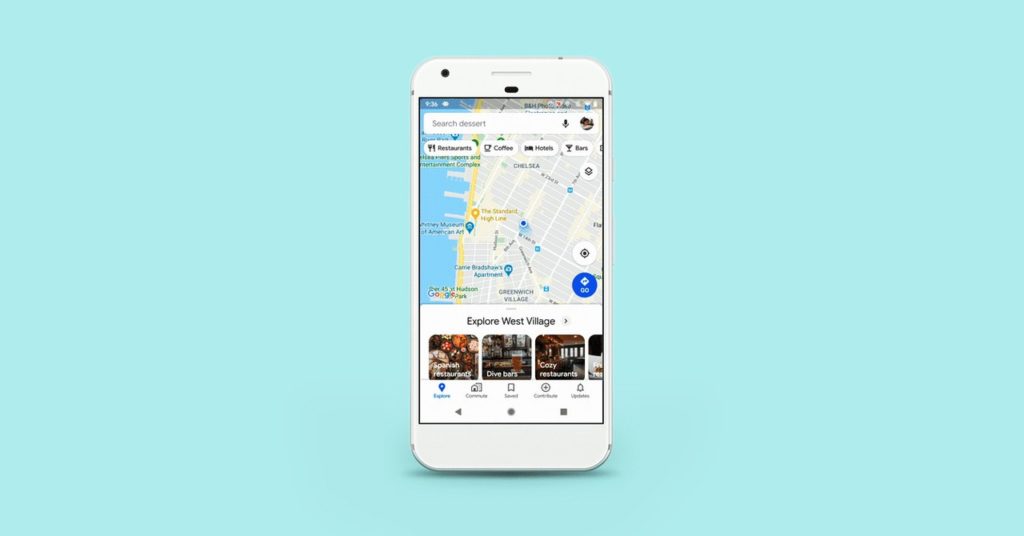Alphabet CEO Sundar Pichai on Maps, AI, Ads, and Ambient Navigation
On Google Maps’ 15th anniversary, the CEO underscores the importance of machine learning, while downplaying Google’s dominance in advertising….


Immediately available, however, is Google’s reemphasized augmented-reality mode. The company first showed off Live View at its software developer conference in 2018 and started rolling it out in 2019. The feature itself hasn’t changed much—hold up your phone and arrows appear within the camera view to point you in the right direction. But now, AR will be available in Maps without starting navigation. People can search for a nearby store or museum, and Live Mode will be ready to activate with a single tap, instead of requiring the user to launch the directions feature first.
This seems simple enough from the description, but augmented reality requires a staggering amount of data behind the scenes to function properly. It’s built on top of existing Street View data, which is gathered by the sensor- and camera-laden cars that Google started to deploy way back in 2007. Live View also scoops up data from users’ cameras as they’re tapping into the AR feature. A GPS signal isn’t enough to determine exactly where you’re facing, so Live View uses machine learning to compare the scene captured by your camera to the billions of Street view images and other user contributions.
“Overall, I think computing should work in a way where it’s much more intuitive to the way people live and not the other way around,” Pichai says. “AR and Maps is really in the sweet spot of that, because as humans we’re walking around the world, perceiving a lot, trying to understand a lot.” Pichai says he sees a future in which Maps users are walking around and an AR layer of information is popping up in Maps, showing them vegetarian menu options at nearby restaurants.
That doesn’t mean AR in Google Maps works like magic now—or will in the near future. “We talk about the double-edge sword of AR,” says Alex Komoroske, director of product management at Maps. “If you get it exactly right, it’s extremely intuitive. But if we get it wrong, it is actively confusing. It’s worse than showing nothing.”
AI Marks the Spot
To keep up with its own grand Maps vision, Google has come to rely on these kinds of machine-learning programs to decipher complicated infrastructure at a global scale. Through test cases in India and Nigeria over the past couple of years, Maps engineers have used ML models to map out roadways and determine building outlines based on satellite imagery. Pichai says that in the last year alone, Google has mapped as many building exteriors as it did cumulatively in the 10 years prior.
He also says he sees AI being deployed horizontally across Google Maps features, not just in assigning street names and outlining buildings. Those examples range from showing people the popular dishes people are eating at a restaurant when you look up directions to that spot, to predicting much more critical situations—earthquakes, hurricanes, heavy rainfalls, or floods. “Obviously, there’s a lot of work to be done in those areas,” Pichai says, but he believes those predictive models could be in Google Maps in as soon as three to five years.
In addition to spending billions on its own mapping data, Google relies heavily on user contributions to contextualize the glut of new information. It’s one thing to map a spiderweb network of dirt roads in the mountains of India, but quite another to know what they’re named. Google says users provide 20 million bits of content every day, but there’s always a need for more. Hence the prominent new Contribute tab on the Maps main screen.
The increasing emphasis on personal interaction loops within the Maps—users voluntarily adding images and street names, detailing live updates of their travels, reviewing restaurants, uploading videos of their surroundings to Google’s servers—underscores that the success of Google Maps depends heavily on whether people keep using Maps, and not, say, opt for the much more private Apple Maps instead. Google Maps is gleaning data from its users whether they’re actively contributing critical information, navigating in the app, or simply tapping to access the new Live View feature. (And remember that Google has gotten into trouble for tracking some users’ locations even after those users have asked it not to.)
Mapping the Future
For the past several years, the Google Maps experience has largely involved opening up a discrete app, especially on mobile phones. Pichai envisions a future in which the information from Google Maps is much more “ambiently” available.




